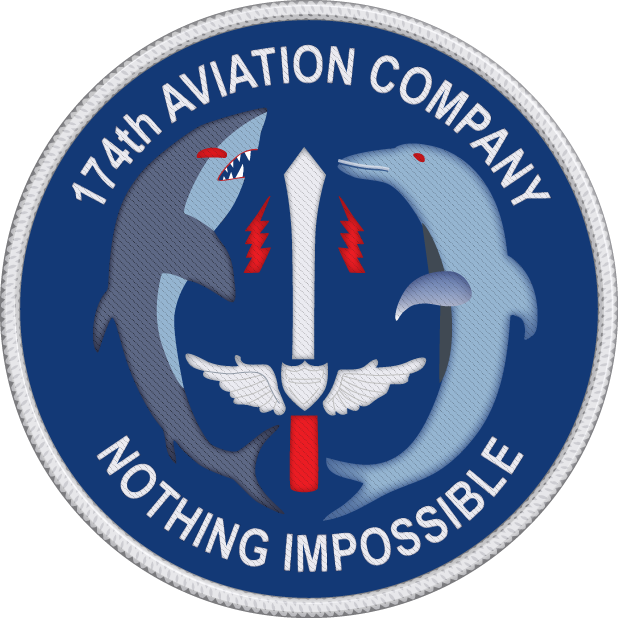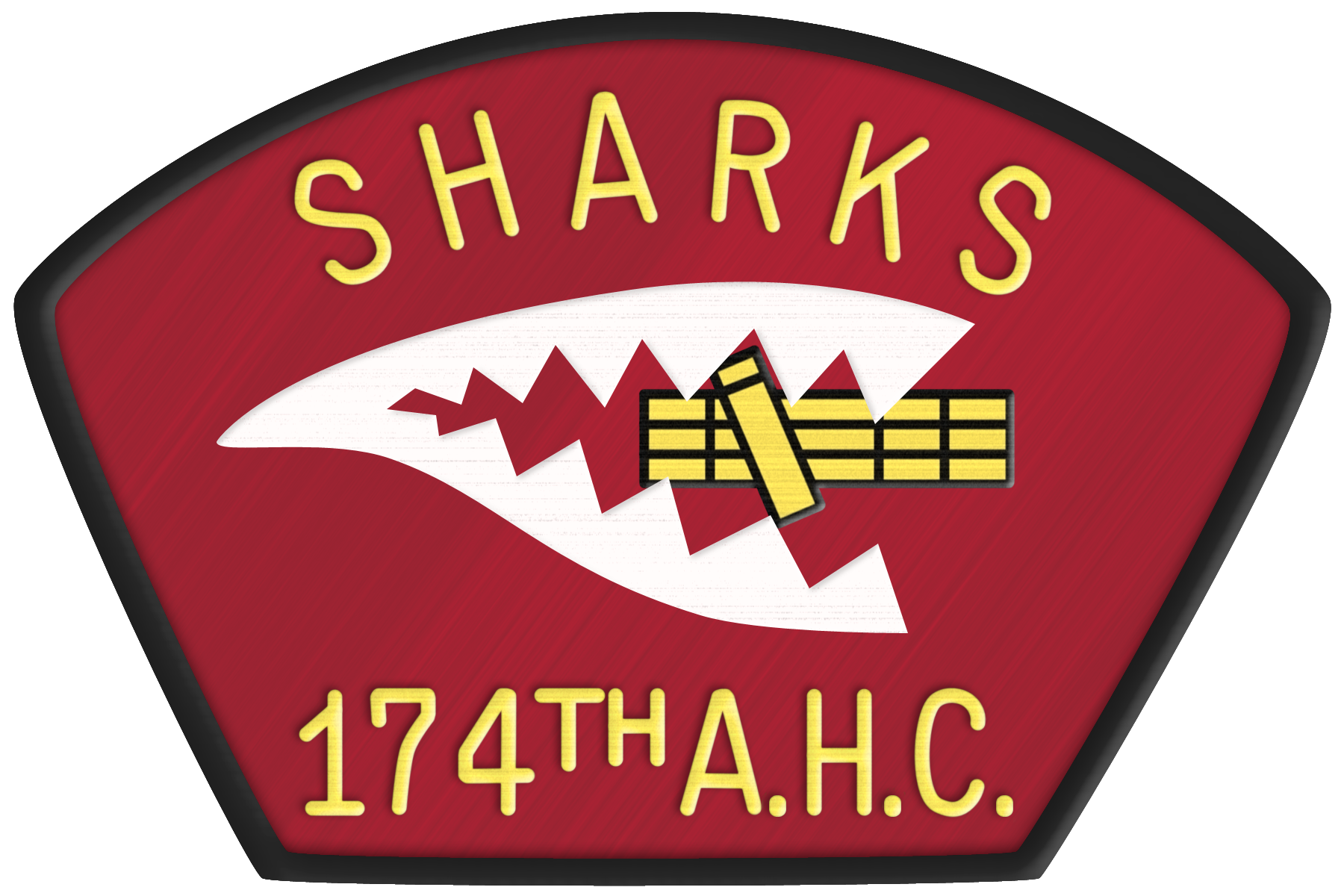Dolphin Down!
J.C. Pennington, Shark 4 (68-69)
(See the story at bottom of this page from an Artillery LNO who was onboard the downed Dolphin.)
(Unless identified otherwise, all photos property of JC Pennington)
The quality of the photos below are not great, but they will serve to supplement the story.
This was an interesting action because we used a tactic I had never seen before, and used
only one other time during my time with the Sharks.
In the photos below, sometime in early 1969, a Dolphin slick got shot down over the Horseshoe
west of Quang Ngai. Don't remember who the crew was. They made a forced landing to the big sandbar in the river.
They were taking fire from villages on both sides of the river. You can see some of the
crew hunkered down in front of the ship. This is a big enlargement of the original photo
which accounts for the poor quality.
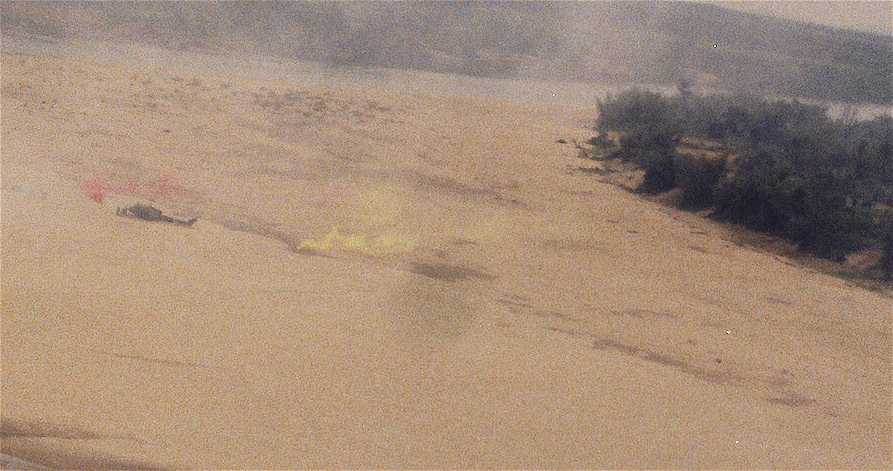
I don't recall exactly who I was flying with this day. I was relatively new to the Sharks and was flying as the peter-pilot (copilot). Below is our wingman as we low-leveled to the Horseshoe on a scramble.
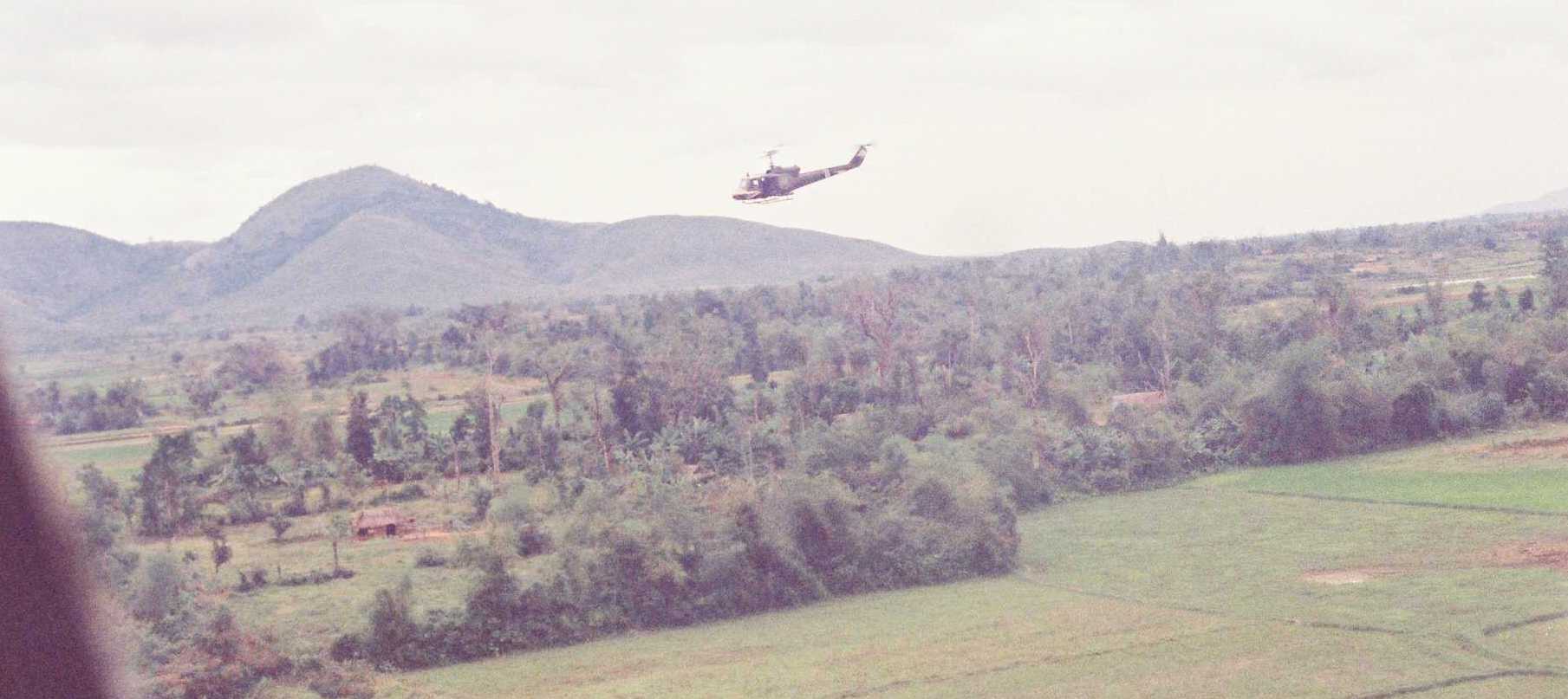
Upon arriving at the Horseshoe, we had a Shark team on each side of the river, each team providing suppressive fire
on each of the riverside villages. We knew the downed Dolphin, and the Shark guns, were taking fire but we
couldn't see exactly where any of it was coming from. That's when this turned into an almost exclusive
door-gun engagement.
Breaking the cardinal rule of not overflying the target, we flew low-level back and forth over the villages and had the gunners drop Willy Pete (white phosphorous) grenades on the hootches. The idea was to burn out the VC and kill them when they ran from the fire. Now if you think about it, this required very low airspeed passes, almost at a hover, very low to the tree tops. We were very vulnerable. At a minimum, we hoped to create enough chaos and smoke and to draw their fire so they could not target the Dolphin on the sandbar. In this shot below you can see one of the Sharks from the team on the opposite side of the river.
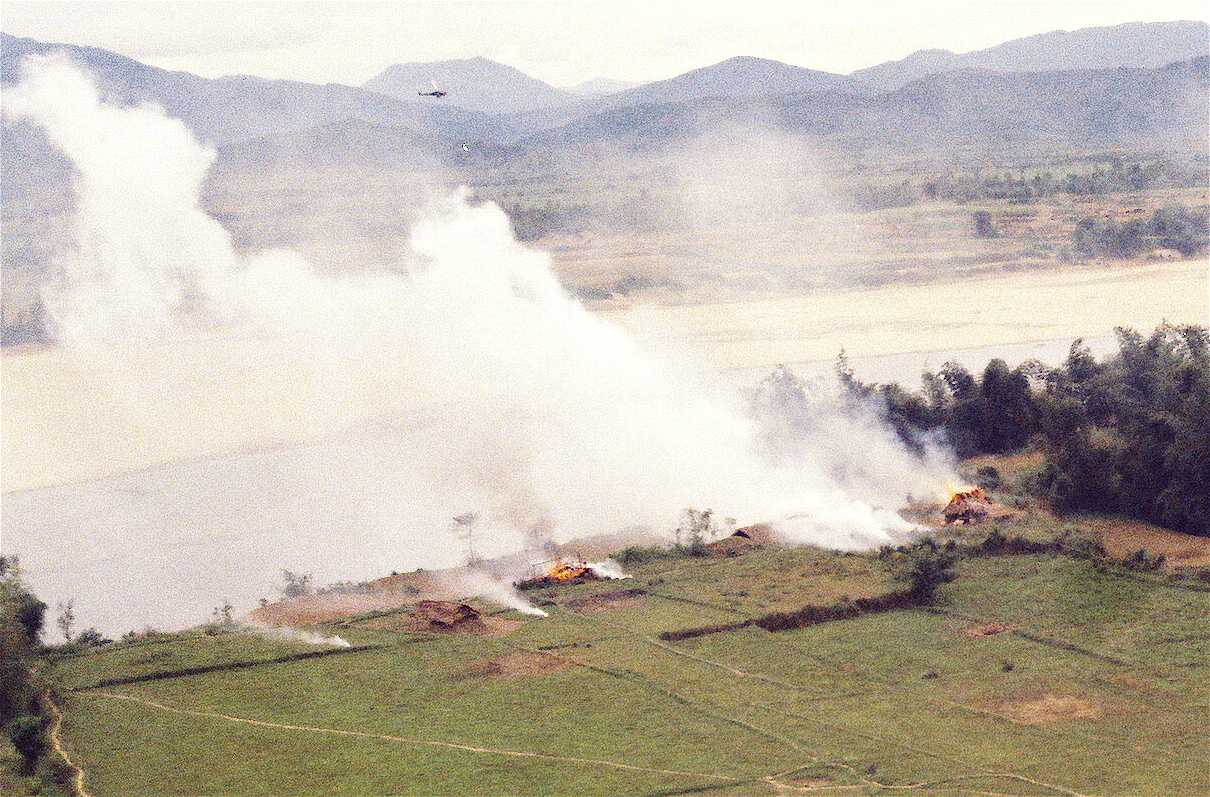
In the photo below, our wingman is just finishing a Willie Pete run, low and slow. You can see in the middle of the photo that
a Willy Pete has just gone off. In the bottom right you can see a fire started in a haystack. Note the altitude is probably
only 35 to 50 feet or so above the trees, a very dangerous altitude to be overflying the bad guys slow and in level flight. Tremendous
credit goes to our fearless door gunners for hanging out on the skids with their M-60s and keeping the VC's heads down.
I'm the peter pilot in the left seat taking the pix. Of course I had time to do this because we weren't using the 2.75" rockets or turret-mounted 40-mm grenade launcher on the nose of the aircraft, just the WP grenades being hand-dropped by the doorgunners, and the doorgunner's fire from their M-60 machine guns. Yes, we were getting shot at, but we couldn't pinpoint the sources, and I had to do something. Why not take photos?
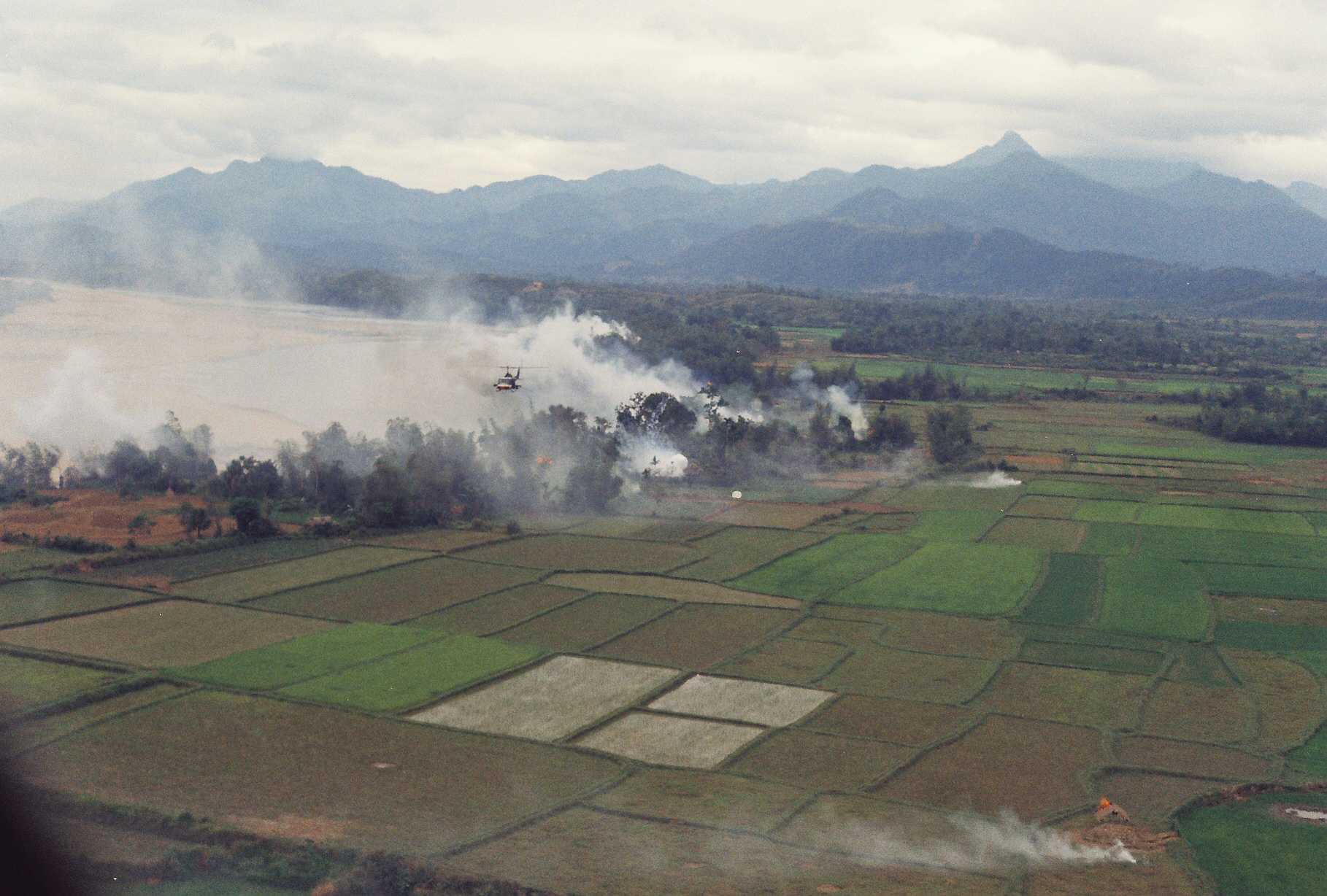
In this shot you can barely make out the Dolphin thru the smoke on the sandbar. We were taking a lot of fire, and it was about this time that we took a hit in the hydraulics system from automatic weapons fire, and had to land before we lost the hydraulics. We departed for Quang Ngai airport which was nearby. The Shark UH-1C (Charlie-model) Hueys, unlike the UH-1D Dolphin slicks, are uncontrollable when all hydraulics are lost. You can fly the slick D-models without hydraulics, kind of like driving a large full-sized automobile without power steering, but you absolutely cannot move the controls of a Charlie-model without hydraulics. Had we not made it back to Quang Ngai before all hydraulic fluid was lost overboard, we would have been unable to control the helicopter in flight. And no, we don't wear parachutes.
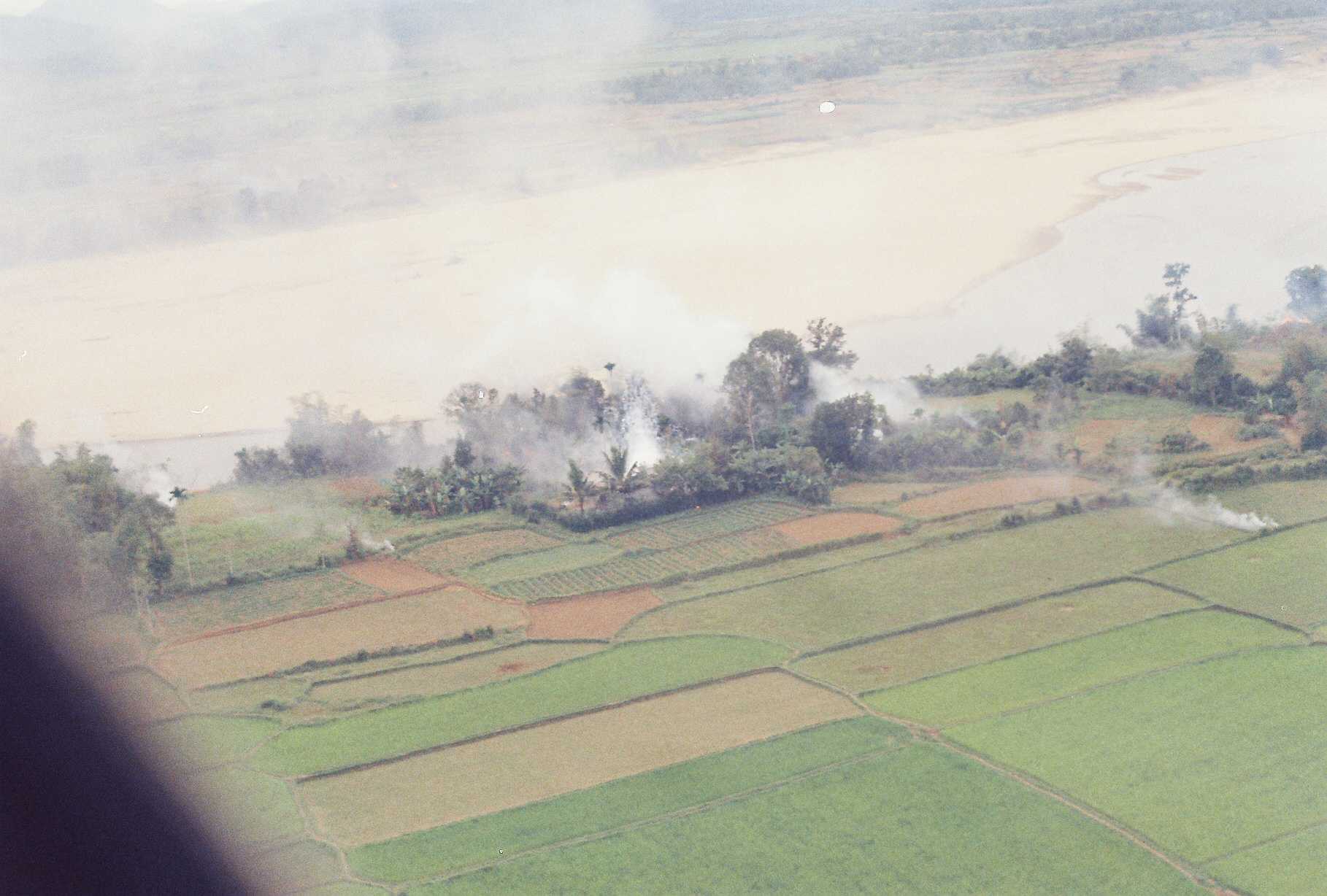
We did make it back, and this photo is after we shut down at Quang Ngai. So, what to do after getting hosed by automatic weapons? Pose for a John Wayne photo of course.
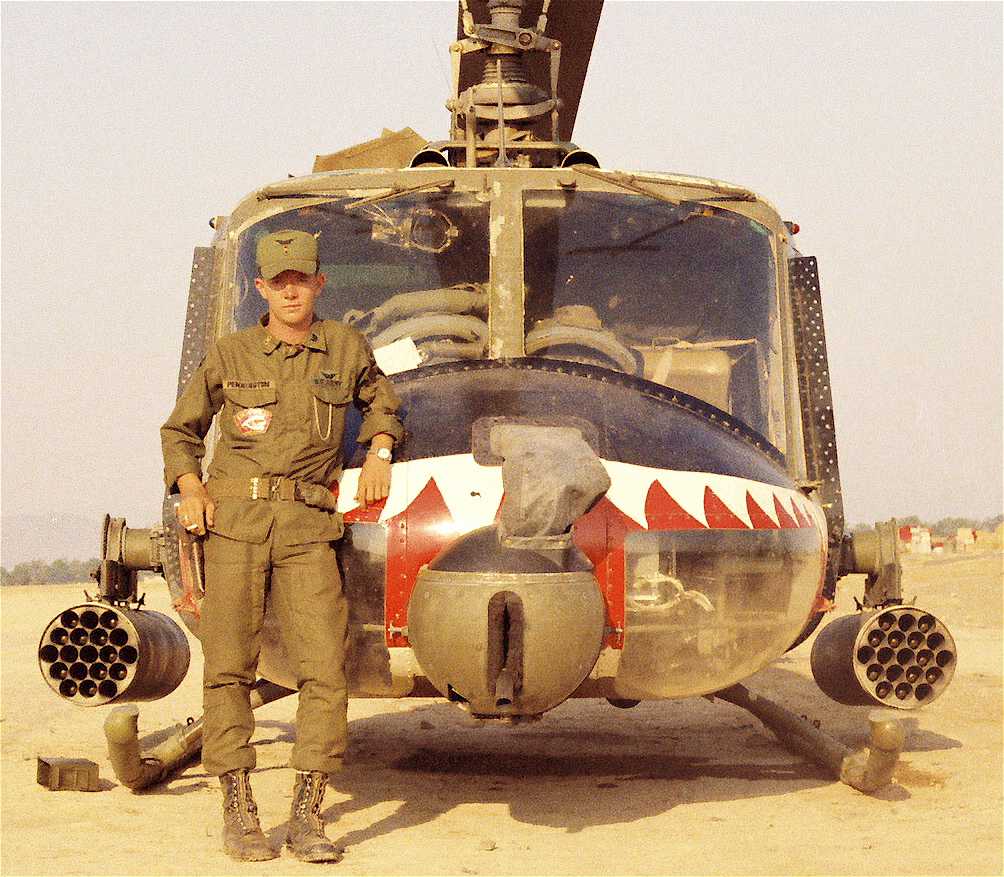
Below is another photo of Shark 157 taken at Quang Ngai. This photo by Jim Towle.
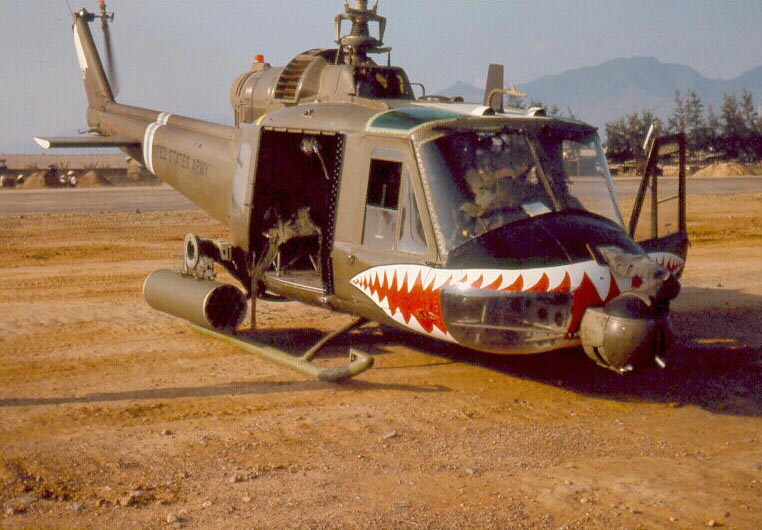
For reference, the "Horseshoe" is an area just west of the city of Quang Ngai (where the solid triangle is in the map below). The Horseshoe is identied (at the right end of the white dashes). You can see that the broad 180-degree bend in the river resembles a horseshoe. This area was a VC and NVA stronghold. Also note the high ground inside the horseshoe. That area was definitely owned by the bad guys. You never ventured up there single-ship. Note the village of My Lai is about the same distance from Quang Ngi as the Horseshoe, but toward the coast. Map property of Jim McDaniel.
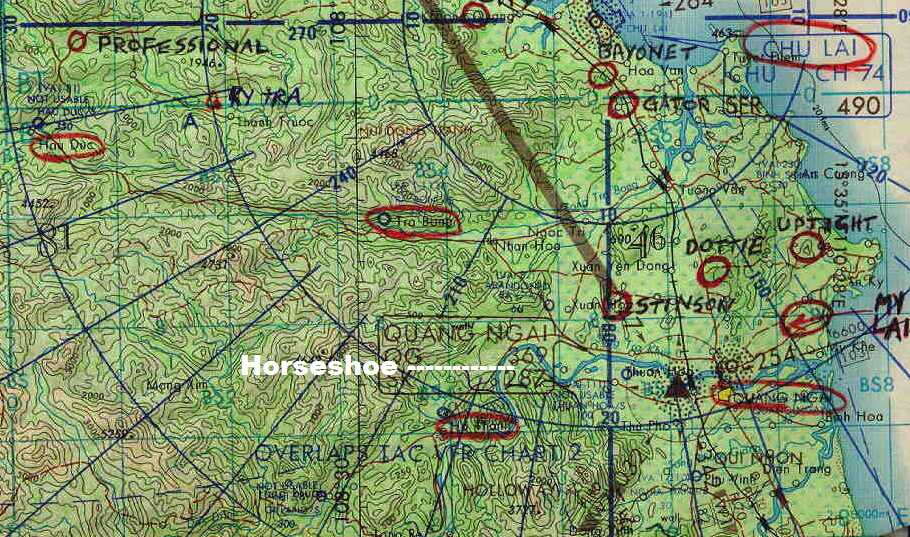
Webmaster Note:
J.C. does not know who was flying the Dolphin that day, and as he had to leave the action early because of
combat damage to his aircraft, he does not know the outcome of the operation. J.C. assumes they were recovered all right because
the unit lost no crewmen that day. Anyone who wishes to add more to this story, please send me an e-mail with details. Thanks, Jim McDaniel, webmaster.
Follow-on Note -- In October 2009, I received the following e-mail relative to this action.
Jim McD>
Hi.
I was surfing through your website and saw the photos from Jim Towle of the "downed Dolphin" in the Horseshoe. The pilot was a CW2 named John O'Sullivan
(later "aviator of the year for 1968") and the "peter pilot" was WO1 Dave Haugen.
The mission was a recon from LZ Cork with LTC McClusky, a battalion commander. The mission was a "C&C" (Command and Control) thing. The Colonel wanted to do a BDA (bomb damage assessment)
on the H&I (Harassment and Interdiction) fires we did the night before.
Flying near the horseshoe, we saw a "carrying party" stretching from the ville (that's in the photos above)
toward where "Hill 411" was. We went in fast and at low level to see what they were carrying.
When we got to the ville, the trees just lit up... nothing but muzzle flashes! O'Sullivan turned over the river when we took hits, and the engine quit... it was the sand bar or nothing.
He does a text book 180 auto (the landing was a little hard, but what the hell). The sand bar was directly across the river from the ville.
Things then got a little exciting. Everybody is digging holes in the sand except Haugen, who is standing up (drawing fire) trying to pull the "secure"
radio out of the dead Huey. The picture would have been funny if it weren't so frightening. He never did get that radio out.
O'Sullivan is on the emergency radio with the "beeper" going. There is an air strike with Air Force F-4 Phantoms going in about 4 k's east of the sand bar.
Problem! No one hears the beeper. Finally a KC-135 tanker north of Da Nang hears us and relays. Shortly after that, the "Sharks" show up.
Meanwhile, on the sand bar, the downed Dolphin is surrounded. The NVA try crossing the river west of the sand bar.
They are discouraged by our rifle fire. However, the real problem is the damned ville on the opposite bank. They keep "plinking" at the dead Dolphin
and generally making life difficult for us folks in shallow holes in the sand.
When the Sharks showed, we start telling them where the bad guys were, who promptly started shooting at the Sharks. While describing where the
bad guys were, the Sharks tactfully suggested,
"...I bet it's the guys shooting at us ..." After duking it out for awhile, Shark 157 takes some hits and has to leave because of damage to the helicopter. A couple more Sharks showed up soon, and the air strike
going in east of us was diverted to the ville.
While the Air Force is pounding away, three more Dolphins arrive with a platoon from LZ Bronco
to rescue our sorry butts. They eventually sling the dead Dolphin out of there, and we exit stage left. For a while there, it was quite exciting...
Amazingly enough, there were no US casualties.
I was the Artillery LNO (Liaison Officer) to 3/1 (3rd Battalion, 1st Infantry) at LZ Cork. LTC McClusky was the Battalion Commander of 3/1.
The date of the photos would be January 23, 1969.
I would like to thank you guys for being there when I desperately needed you.
Respectfully,
Kenneth A. Zilke
Formerly 1st Lieutenant
6th Battalion, 11th Artillery
